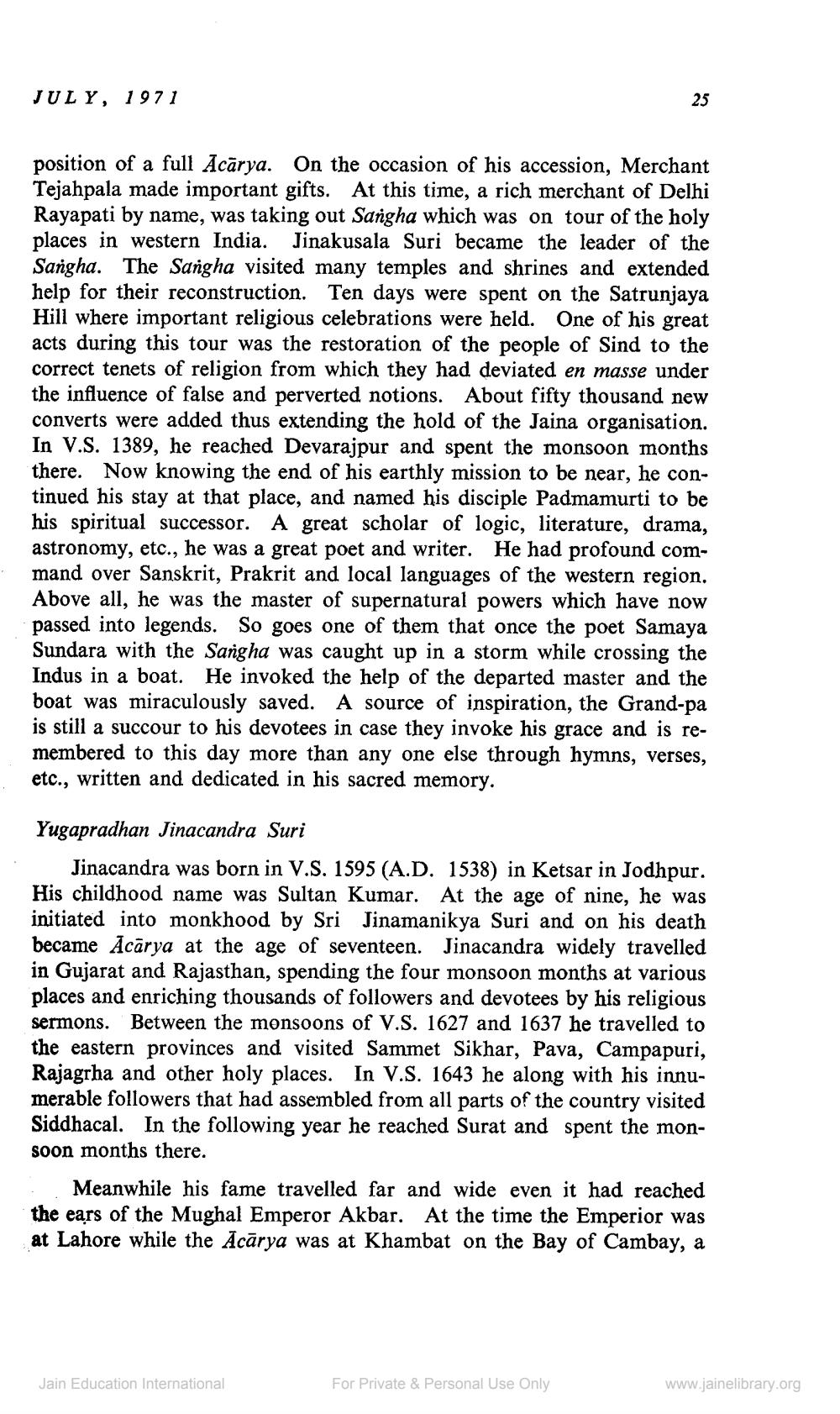________________
JULY, 1971
position of a full Acarya. On the occasion of his accession, Merchant Tejahpala made important gifts. At this time, a rich merchant of Delhi Rayapati by name, was taking out Sangha which was on tour of the holy places in western India. Jinakusala Suri became the leader of the Sangha. The Sangha visited many temples and shrines and extended help for their reconstruction. Ten days were spent on the Satrunjaya Hill where important religious celebrations were held. One of his great acts during this tour was the restoration of the people of Sind to the correct tenets of religion from which they had deviated en masse under the influence of false and perverted notions. About fifty thousand new converts were added thus extending the hold of the Jaina organisation. In V.S. 1389, he reached Devarajpur and spent the monsoon months there. Now knowing the end of his earthly mission to be near, he continued his stay at that place, and named his disciple Padmamurti to be his spiritual successor. A great scholar of logic, literature, drama, astronomy, etc., he was a great poet and writer. He had profound command over Sanskrit, Prakrit and local languages of the western region. Above all, he was the master of supernatural powers which have now passed into legends. So goes one of them that once the poet Samaya Sundara with the Sangha was caught up in a storm while crossing the Indus in a boat. He invoked the help of the departed master and the boat was miraculously saved. A source of inspiration, the Grand-pa is still a succour to his devotees in case they invoke his grace and is remembered to this day more than any one else through hymns, verses, etc., written and dedicated in his sacred memory.
25
Yugapradhan Jinacandra Suri
Jinacandra was born in V.S. 1595 (A.D. 1538) in Ketsar in Jodhpur. His childhood name was Sultan Kumar. At the age of nine, he was initiated into monkhood by Sri Jinamanikya Suri and on his death became Acārya at the age of seventeen. Jinacandra widely travelled in Gujarat and Rajasthan, spending the four monsoon months at various places and enriching thousands of followers and devotees by his religious sermons. Between the monsoons of V.S. 1627 and 1637 he travelled to the eastern provinces and visited Sammet Sikhar, Pava, Campapuri, Rajagrha and other holy places. In V.S. 1643 he along with his innumerable followers that had assembled from all parts of the country visited Siddhacal. In the following year he reached Surat and spent the monsoon months there.
Meanwhile his fame travelled far and wide even it had reached the ears of the Mughal Emperor Akbar. At the time the Emperior was at Lahore while the Acarya was at Khambat on the Bay of Cambay, a
Jain Education International
For Private & Personal Use Only
www.jainelibrary.org




